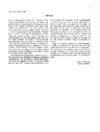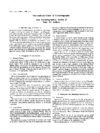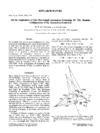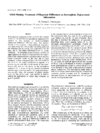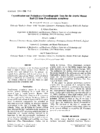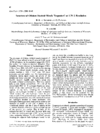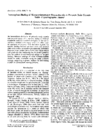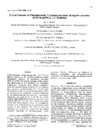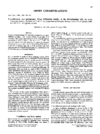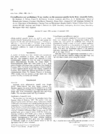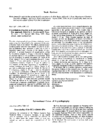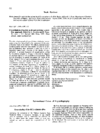issue contents
January 1994 issue

Cover illustration: The overall folding of the salmon trypsin molecule. Courtesy of A. O. Smalas and A Hordvik.
editorial
Free 

international union of crystallography
Free 

research papers
It is shown that from a Fourier map calculated using anomalous intensity differences the absolute configuration of the anomalous scatterers, and hence of the complete structure, may be determined.
Open  access
access
 access
accessA Bayesian approach is applied to the calculation of Patterson functions and cross-Fourier maps in the analysis of multi-wavelength anomalous-diffraction (MAD) data.
Open  access
access
 access
accessA framework analogous to that used for the analysis of data in the method of isomorphous replacement is applied to the analysis of multi-wavelength anomalous-diffraction (MAD) data.
Using crystallographic cross-validation it is shown that time-averaged ensembles of protein structures overfit data unless individual B values are retained on atoms throughout the refinement. Ensembles refined with B values yield genuinely low R values as well as valuable information about conformational substates not present in a single refined structure.
Preliminary crystallographic data are reported on the azurin mutant where residues Met121 to Lys128 have been deleted.
1.78 Å resolution refinement of chicken skeletal muscle troponin C reveals a bound sulfate ion and five side chains with two discrete conformations.
PDB reference: 1top
Highest resolution CaM structure from rPCaM reveals that all central helix hydrogen bonds are intact, the D-E linker C=O groups are girdled by water molecules and the mini β-sheets in both domains are extended by water bridges.
PDB reference: 1osa
The preparation of Fab fragments of two monoclonal antibodies specific for the same site on horse cytochrome c is described. In addition, the conditions for crystallization of Fab-cytochrome c complexes are presented along with the results of preliminary X-ray diffraction studies.
The affinity of pertussis toxin for sialic acid has been used to design a thiosaccharide with a covalently bound Hg atom suitable for use as a heavy-atom isomorphous derivative.
The structure of chloromuconate cycloisomerase. a chloride-eliminating enzyme, was determined at 3 Å resolution and compared with that of the homologous muconate cycloisomerase to reveal the reasons for the altered substrate specificity. Differences were found in polarity, accessibility and hydrogen-bonding potential.
PDB reference: 1chr
Two independently determined crystal structures of TGF-β2 have been compared and the results are used to evaluate several error assessment methods including a new local error estimation method using Cruickshank's formula.
The natural zinc ion in carbonic anhydrase II was replaced with various other metals. Tetrahedral coordination was observed only for the active metals zinc and cobalt, and higher coordination for the inactive metals.
Wild-type carbonic anhydrase II and mutant ElO6Q were found to bind acetate differently. In the mutant acetate is coordinated to the zinc ion but not in the wild-type enzyme.
short communications
Crystals of bacteriophage Qβ have been obtained by the vapour-diffusion technique. The crystal space group is C2221 with the unit-cell parameters a = 478, b = 296, c = 477 Å, α = β = γ = 90°.
Monoclinic crystals of a 14 kDa mannose-specific protein from Amaryllis bulbs were obtained by the hanging-drop method and diffract to 2.25 Å resolution.
book reviews
Free 

international union of crystallography
Free 



 journal menu
journal menu









